
The 39th International 500-Mile Sweepstakes was held at the Indianapolis Motor Speedway on Monday, May 30, 1955. The event was race 1 of 11 of the 1955 AAA National Championship Trail and was race 3 of 7 in the 1955 World Championship of Drivers.

The 40th International 500-Mile Sweepstakes was held at the Indianapolis Motor Speedway on Wednesday, May 30, 1956. The event was part of the 1956 USAC National Championship Trail and was also race 3 of 8 in the 1956 World Championship of Drivers. The 1956 race was the first to be governed by the United States Automobile Club. The AAA withdrew from auto racing the previous August after a succession of incidents, including the Le Mans disaster and the fatal crash of Bill Vukovich during the 1955 race. Another change was made to the track that would have an immediate effect on the racing. The vast majority of the circuit was paved over in asphalt. A short stretch approximately 600 yards in length was left brick along the mainstretch. Speeds were expected to climb, and qualifying records were expected to be shattered during time trials.

The 42nd International 500-Mile Sweepstakes was held at the Indianapolis Motor Speedway on Friday, May 30, 1958. The event was part of the 1958 USAC National Championship Trail, and was also race 4 of 11 in the 1958 World Championship of Drivers.

The 49th International 500-Mile Sweepstakes was held at the Indianapolis Motor Speedway in Speedway, Indiana on Monday, May 31, 1965.

The 53rd International 500 Mile Sweepstakes was an auto race held at the Indianapolis Motor Speedway in Speedway, Indiana on Friday, May 30, 1969. It was the third round of the 1969 USAC Championship Car season. Polesitter A. J. Foyt led the race in the early stages, looking to become the first four-time winner of the 500. Near the halfway point, however, a lengthy pit stop to repair a broken manifold put him many laps down. Despite a hard-charging run towards the end, he wound up managing only an eighth-place finish, 19 laps down. Lloyd Ruby, a driver with a hard-luck reputation at the Speedway, was leading the race just after the midpoint. During a pit stop, he pulled away with the fueling hose still attached, ripped a hole in the fuel tank, and was out of the race. The incident put Mario Andretti in the lead for rest of the way.
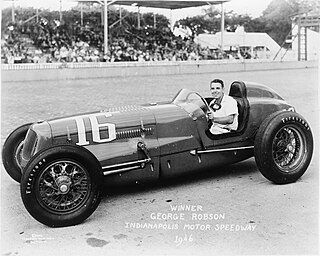
The 30th International 500-Mile Sweepstakes was held at the Indianapolis Motor Speedway on Thursday, May 30, 1946. This was the first Indianapolis 500 presided over by new track owner Tony Hulman. The track had closed in late 1941 due to World War II, and over the next four years, the facility fell into a terrible state of disrepair. Hulman purchased the Speedway in November 1945, and quickly went to work cleaning up the grounds, which had become overwhelmed by overgrowth and weeds. The Speedway re-opened, and the 1946 race was considered a rousing success.

The 7th Liberty 500-Mile Sweepstakes was held at the Indianapolis Motor Speedway on Saturday, May 31, 1919.
The 23rd International 500-Mile Sweepstakes Race was held at the Indianapolis Motor Speedway on Thursday, May 30, 1935. Despite attempts to improve participant safety by requiring crash helmets and installing green and yellow lights around the track, the event that year would prove to be one of the worst in terms of fatalities.
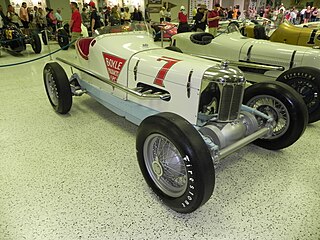
The 22nd International 500-Mile Sweepstakes Race was held at the Indianapolis Motor Speedway on May 30, 1934. The winner was the number seven car driven by Bill Cummings, an Indianapolis native, at an average speed of 104.863 miles per hour. Cummings led for 57 laps total, including the last 26. Of the 33 cars that began the race, only 12 were running at the finish, although there were no crashes resulting in serious injuries. One serious incident involved George Bailey, whose car went over the outside wall, but resulted in only a broken wrist to the driver. The finish was the closest in the history of the race to that point, with second-place finisher Mauri Rose within 100 yards of Cummings at the finish. Rose would also file a protest that Cummings had illegally gained ground during a "slow-down" period following a crash.
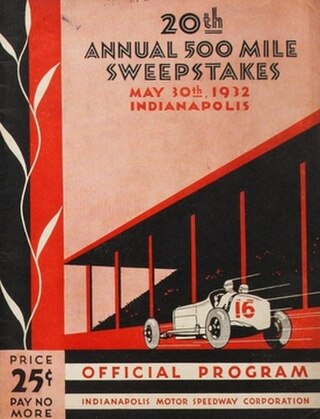
The 20th International 500-Mile Sweepstakes Race was held at the Indianapolis Motor Speedway on Monday, May 30, 1932. Attrition was the story of the race, with 26 of the 40 cars dropping out due to crashes or mechanical failure. A record eight different drivers led laps during the race, with no driver seemingly able to hold the lead without experiencing some sort of trouble. For the third year in a row, Billy Arnold looked as if he would be the dominant car, but he sailed over the turn three wall on lap 59. Rookie Bob Carey also hit the wall while leading. Fred Frame took the lead for good on lap 152, and won from the 27th starting position - the furthest back of any winner except for Ray Harroun in 1911 and later, Louis Meyer in 1936. Frame was accompanied by riding mechanic Jerry Houck.

The 19th International 500-Mile Sweepstakes Race was held at the Indianapolis Motor Speedway on Saturday, May 30, 1931. Race winner Louis Schneider, who led the final 34 laps, was accompanied by riding mechanic Jigger Johnson.

The 18th International 500-Mile Sweepstakes Race was held at the Indianapolis Motor Speedway on Friday, May 30, 1930. The race was part of the 1930 AAA Championship Car season.

The 17th International 500-Mile Sweepstakes was held at the Indianapolis Motor Speedway on Thursday, May 30, 1929. Ray Keech, who finished fourth a year earlier, took the lead for the final time on lap 158 and won his first Indianapolis 500. Keech won for car owner Maude A. Yagle, the first and to-date, only female winning owner in Indy history. Only two weeks after winning the race, Ray Keech was fatally injured in a crash at Altoona Speedway on June 15, 1929. The race was part of the 1929 AAA Championship Car season.

The 13th International 500-Mile Sweepstakes Race was held at the Indianapolis Motor Speedway on Saturday, May 30, 1925.

The 8th International 500-Mile Sweepstakes Race was held at the Indianapolis Motor Speedway on Monday, May 31, 1920.
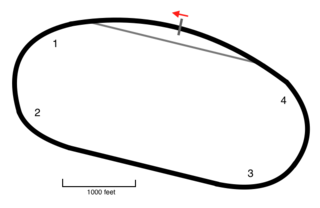
The Michigan 500 was an IndyCar Series race held at Michigan International Speedway in Brooklyn, Michigan. Held from 1981 to 2001, the event was held in high prestige, constituting part of Indy car racing's 500-mile "Triple Crown".
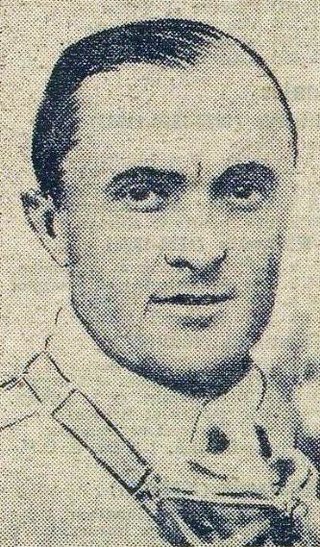
The 1928 Grand Prix season saw the Monegasque driver Louis Chiron, and his Bugatti, take seven Grand Prix victories.
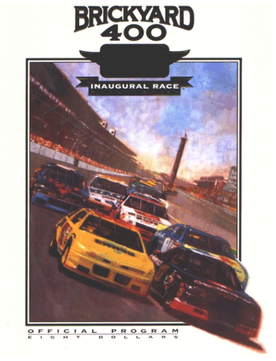
The 1994 Brickyard 400 was held on Saturday, August 6, 1994, at the Indianapolis Motor Speedway. The race marked the nineteenth race of the 1994 NASCAR Winston Cup Series season. It was the first NASCAR stock car race at the famous Speedway and the first race of any kind held at the track beside the Indianapolis 500 since the Harvest Classic in 1916. The race featured the largest crowd in NASCAR history, and a then NASCAR record purse of $3.2 million.
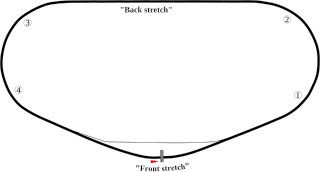
The Daytona 100 was a USAC Championship Car race held at Daytona International Speedway in Daytona Beach, Florida on Saturday April 4, 1959. It was the first and only Indy car race held on the high banks of Daytona, and saw incredible speeds turned in by the front-engined "roadsters." The race was part of a triple-header weekend featuring races for the USAC Championship Cars, Formula Libre, and a USAC-FIA sports car endurance race.



















